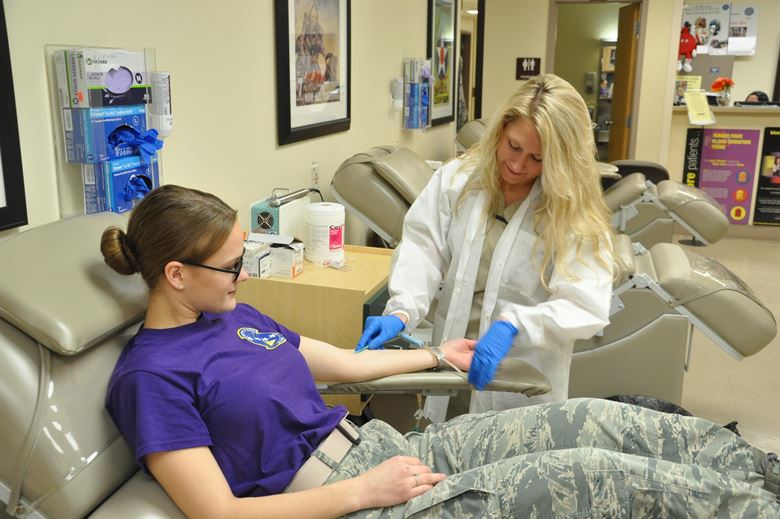The amount of blood is our body differs from one to another primarily due to size and age. After a certain age, we can afford to lose a level of blood without causing harm to our body. Let’s say you want to donate blood, you can do that after a certain age as recommended by doctors. This is also the reason why having minor injuries isn’t much to stress about irrespective of the age. Here, we will give you a detailed idea about how much blood is in the human body and everything relative that you should know.
Table of Contents
The volume of blood in humans
Blood accounts for around 7% to 8% of your body weight. It differs if you are a man, woman, or child. An average adult has a blood flow of 4 to 6 liters circulating all through their body. The volume differs according to several factors including size and age. Check out the average quantity of blood in human body in litres:
- An average-sized woman has around 4.2 liters of blood in her body
- An average-sized man has around 5.6 liters of blood in his body
- A newborn has around 77 milliliters of blood per kilo of body weight
- A growing child has around 73 milliliters of blood per kilo of body weight
To know exactly how much blood is in the human body you need to take a test. Such tests are required if you have anemia or dengue.
A blood test takes about one hour and you cannot eat anything for four hours before the test. Blood is usually taken from a vein in your arm for a test. It is the same part of your body that donates blood if and when you need to.
The doctor can also add a tiny amount of special tracer in your body to get a series of pictures that track the amount of blood circulating. To know your Complete Blood Count (CBC) you need a different kind of medical test that doesn’t look at the blood volume. CBC helps identify the level of blood you have in your body.
How much blood is in the human body to donate?
If you want to donate blood, you need to cross a certain age. The age is set according to law and differ from one country to another. The standard age is after adulthood or 18 years of age.
The standard amount of blood that you can donate is about half a liter or 473 ml approximately. It is one-tenth of the amount of blood that you have in your body and losing that much will not hurt you.
You can donate blood once every two months but it better to donate once every three months. Severe bleeding can be fatal for you if you have an accident within two months of blood donation. If you lose about one-fifth of the blood volume you have, your body can go into a shock.
According to medical terms, a shock due to blood loss happens when body tissues don’t get enough oxygen. Low level of oxygen causes damage to your brain and to more parts of the body.
What do to during an injury?
If you have a deep cut or wound near the vein such as the neck or wrist, and you bleed heavily, it can be fatal. A wound on the head can lead to significant loss of blood and that is also fatal.
If someone has severe bleeding, he/she will need immediate medical attention. You must lie him/her down. If the injury is in the hand or legs, try to elevate the body part to reduce blood loss.
If someone bleeds profusely, their body directs less blood to their fingers, skin, and toes. This helps protect other vital organs. Someone losing lots of blood will start to look pale and feel numbness in the fingers.
The heart speeds up to pump the rest of the blood that is in the body to send it across the internal organs. This is also when blood pressure drops and the body tries to prevent blood loss. A person can faint after losing a certain amount of blood.
Blood transfusion is a medical process to donate blood to a person who needs it. If someone needs blood, he has probably lost a lot of it due to an injury or illness. Disease like sickle cell condition, cancer, and dengue trigger the need for blood transfusion. It is a safe process that works like a lifesaver for an ill person. Everyone must practice donating blood once in every three to four months.
How much blood do you produce in a day?
Our body makes around 2 million red blood cells every second. These develop from the stem cells in our bone marrow. The stem cells are a type that helps create more cells. The process happens all through a person’s life.
Our blood is made of different parts and each of them has a different role to play in terms of health.
- The red blood cells carry both carbon dioxide and oxygen
- White blood cells defend our body from infections and diseases
- Platelets help the body stop bleeding
- Plasma is a type of fluid that goes all through the body to clot blood and supports our immune system
Different parts of our blood take different amounts of time to replace blood. Our body takes just 24 hours to replace the plasma it loses. But it takes more time to gain red blood cells – around 4 to 6 weeks at least.
The color red in our blood occurs due to the level of hemoglobin. Since hemoglobin has a lot of iron, your body loses iron when you donate. You need at least 6 to 12 weeks to normalize that after blood donation.
Our body also stores iron that is channelized after blood loss. However, you need to replace this iron with the required level of blood by eating food rich in iron.
Around 55% of the blood is made of plasma, while 90% of the plasma is water. It is essential that you drink lots of fluids after donating blood to replace what’s lost.
Final thoughts
Now you know how much blood is in the human body and also that the normal blood percentage in human body in 7 to 8. This means that blood replaces fast and you can afford to donate once every three months. However, losing almost one-fifth of blood is dangerous and is be life-threatening.



















